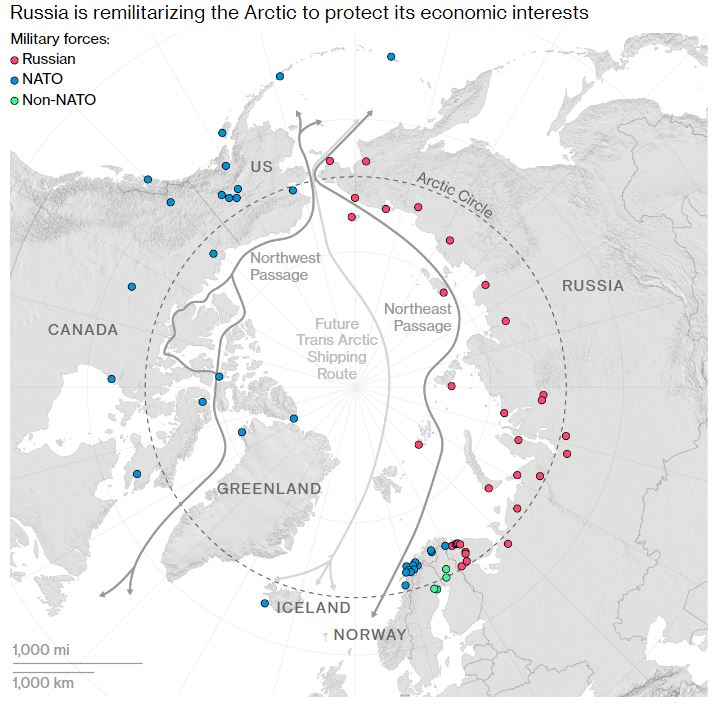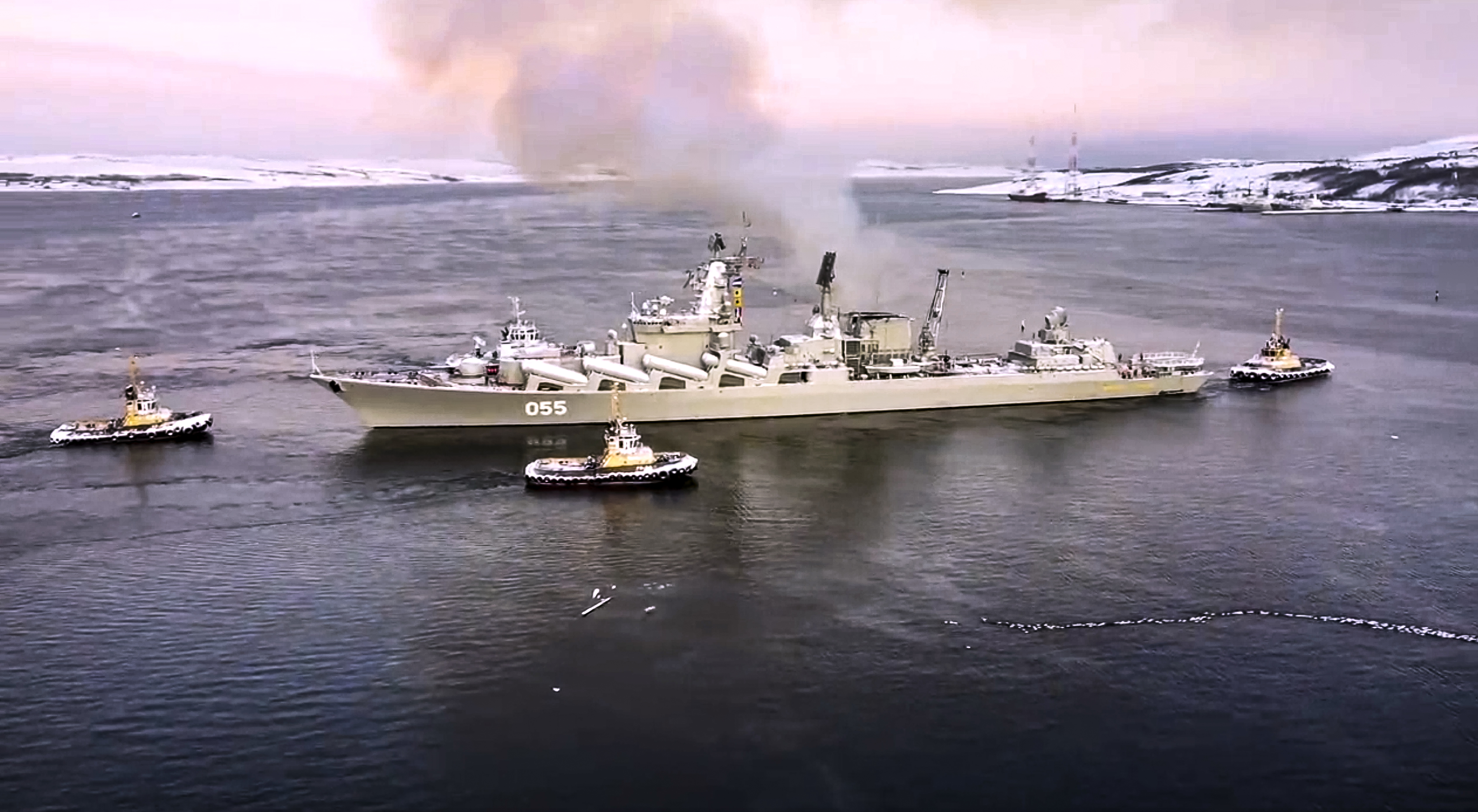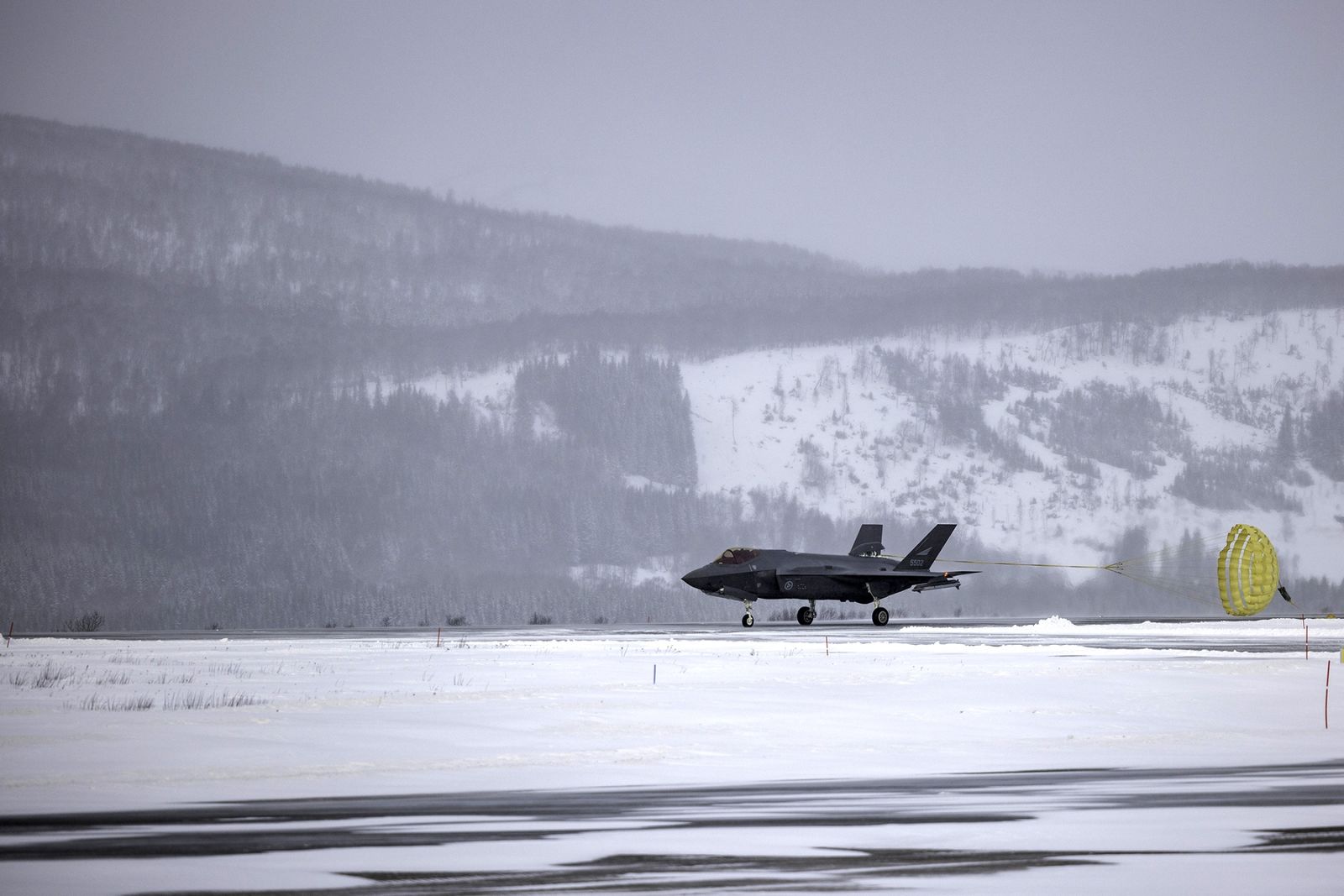
Resources in arctic seabed they have not yet been fully “charted”. However, the region is estimated to hold about a quarter of the world’s oil and gas reserves, and its sea lanes could benefit commercial shipping by saving days, if not weeks, on today’s conventional “roads” of march to the sea. .
Russian President Vladimir Putin, despite the fact that there was a war in Ukraine, closely followed military training NATO forces in the remote Arctic.
The Arctic is increasingly becoming a center of energy, trade and security, and therefore a field that Russia, the US, China and others are vying for control of.

Arctic warming four times faster than the rest of the world. Longer ice-free periods will mean more maritime traffic and potentially easier access to its natural resources.
About 90 billion barrels of oil and 1,670 trillion cubic feet of natural gas could be within the Arctic Circle, according to the US Geological Survey.
The strategic importance of the Arctic for Moscow
Moscow deploys its most important strategic systems in the region, including nuclear submarines.
As Bloomberg notes, military universities indicate that, regardless of the outcome of the war in Ukraine, NATO member countries are preparing for long period of confrontation with Russia.

“We are dealing with a state that has demonstrated both the intent and the ability to aggressively use military force. This means that we must look ahead and be prepared to prevent such actions against a NATO member state,” Rear Admiral Rune Andersen, commander of the Royal Norwegian Navy, eloquently says.
Troops of more than 20,000 troops from the US, UK, the Netherlands and six other countries navigate through ice, heavy snow and -20 degrees Celsius to help Norway, which in this fictional Eleven Day War scenario is facing a limited, massive invasion from the north.
Paratroopers from the observation and reconnaissance detachment @Commando_Ops and NL @korpsmariniers parasailing in Takvatnet, Norway. The frozen arctic lakes and terrain allow the elite forces to be placed almost anywhere, which they have proven in practice. #JointViking23 #JointWarrior pic.twitter.com/EtYa6eoPVP
– Norwegian Armed Forces | Forsvaret (@Forsvaret_no) March 11, 2023
As Finland and Sweden vie to join the North Atlantic Alliance, NATO, if successful, will now include seven of the eight Arctic nations in its ranks. This will mean a stronger collective force in the air, sea and land, as well as an extensive rail network to transport troops and equipment in case of conflict.
Of course, this united front could also give the Kremlin an excuse to build up its military power in the region on the grounds that NATO is seeking to encircle Russia.
“If Russia wants to become a great power, if Russia wants to have a credible nuclear deterrent, if Russia wants to control the immediate security environment in Northern Europe as well as in the Arctic, then it needs to have a very strong security and military presence in the Arctic,” says Andreas Oesthagen. , Leading Research Fellow at the Fridtjof Nansen Institute in Norway.
GIUK Gap
Of particular interest is the so-called Greenland-Iceland-UK (GIUK) gap, a sea passage through which Russian ships must pass in order to enter the Atlantic. From then on, Russian forces could potentially disrupt commercial shipping or military supply lines from the US to Europe, or even sabotage submarine transatlantic cables.

Putin appears to be beefing up the Russian presence in the Arctic, even as he makes massive use of his military stockpiles in Ukraine. In recent years has reactivates old military bases Soviet times and he received build new. About two-thirds of Russia’s nuclear-powered ships, including ballistic missile submarines, belong to the Northern Fleet based on the Kola Peninsula.
Last year, Vladimir Putin unveiled a new naval strategic doctrine, promising to defend Arctic waters “by any means,” including the Zirkon hypersonic missile system. In addition, Defense Minister Sergei Shoigu announced plans to supply the Russian Arctic troops with approx. 500 modern weapons systems and ensure full radar coverage of the Arctic airspace – although it remains unclear if these goals are achieved by the end of 2022.

According to Rebecca Pincus, director of the Polar Institute, in addition to securing its strategic goals, Russia, like other states, is also focused on maintaining its economic interests in the Arctic.
Source: Bloomberg.
Source: Kathimerini
Anna White is a journalist at 247 News Reel, where she writes on world news and current events. She is known for her insightful analysis and compelling storytelling. Anna’s articles have been widely read and shared, earning her a reputation as a talented and respected journalist. She delivers in-depth and accurate understanding of the world’s most pressing issues.